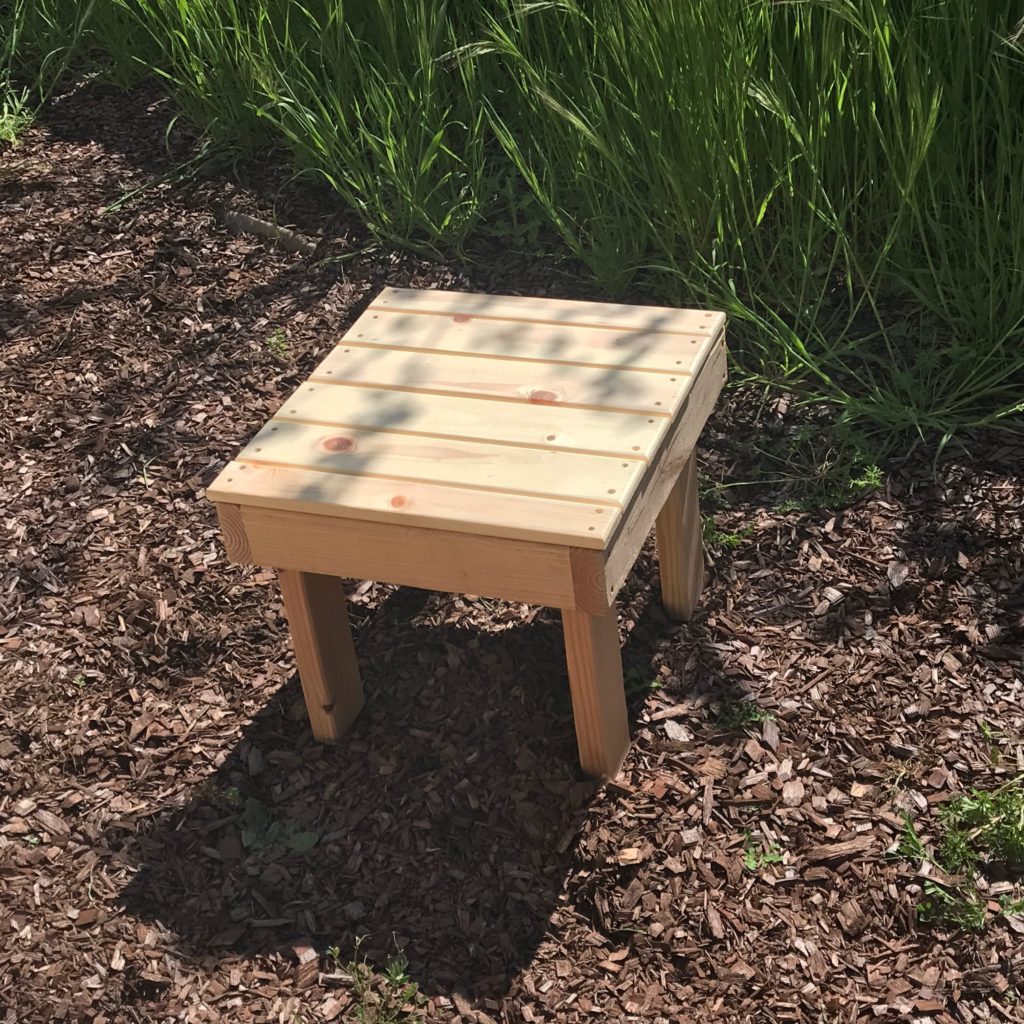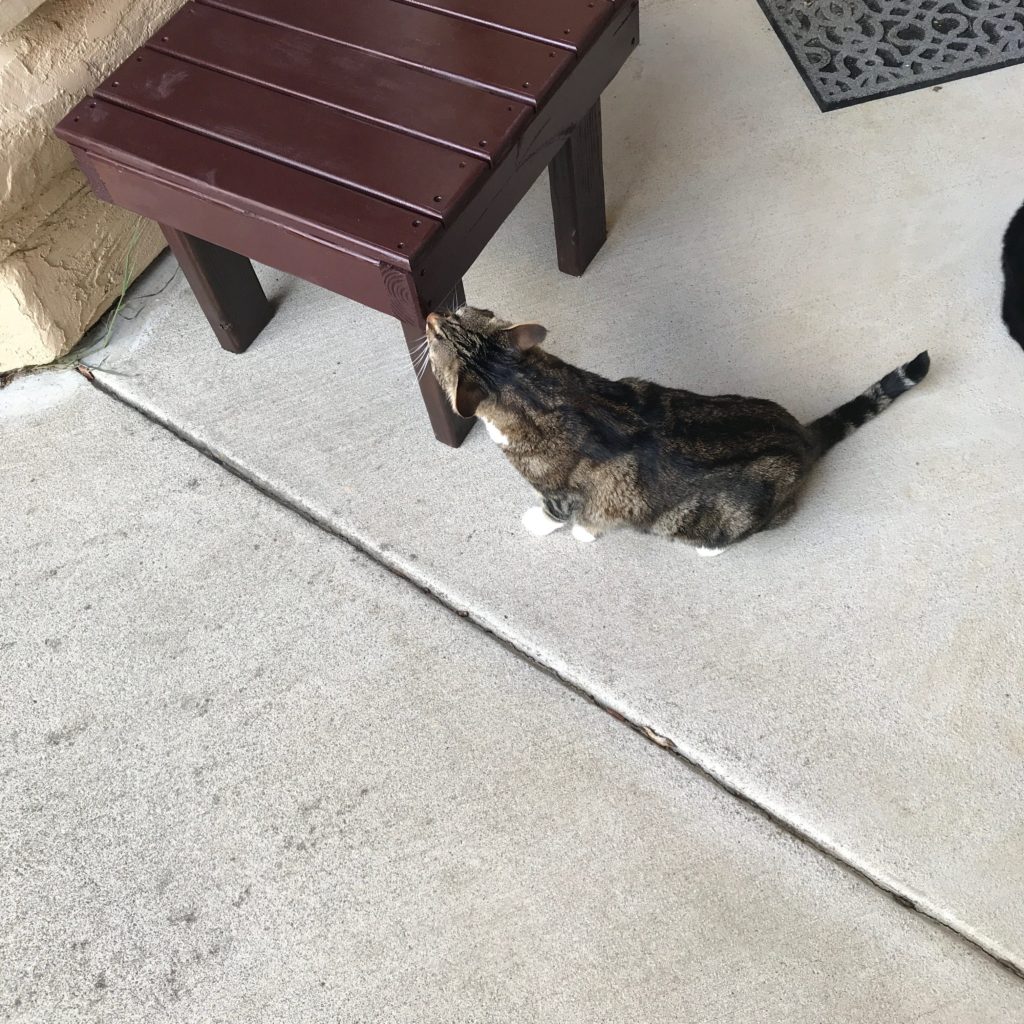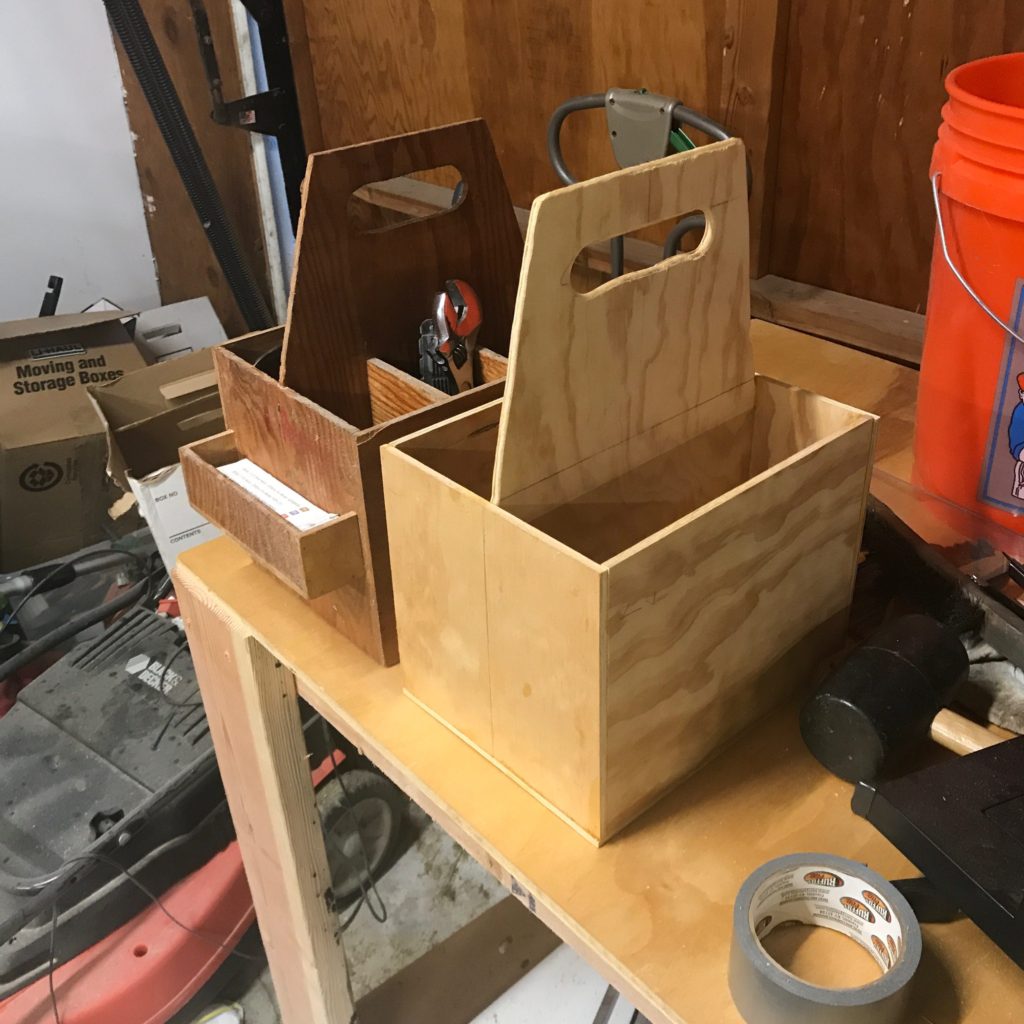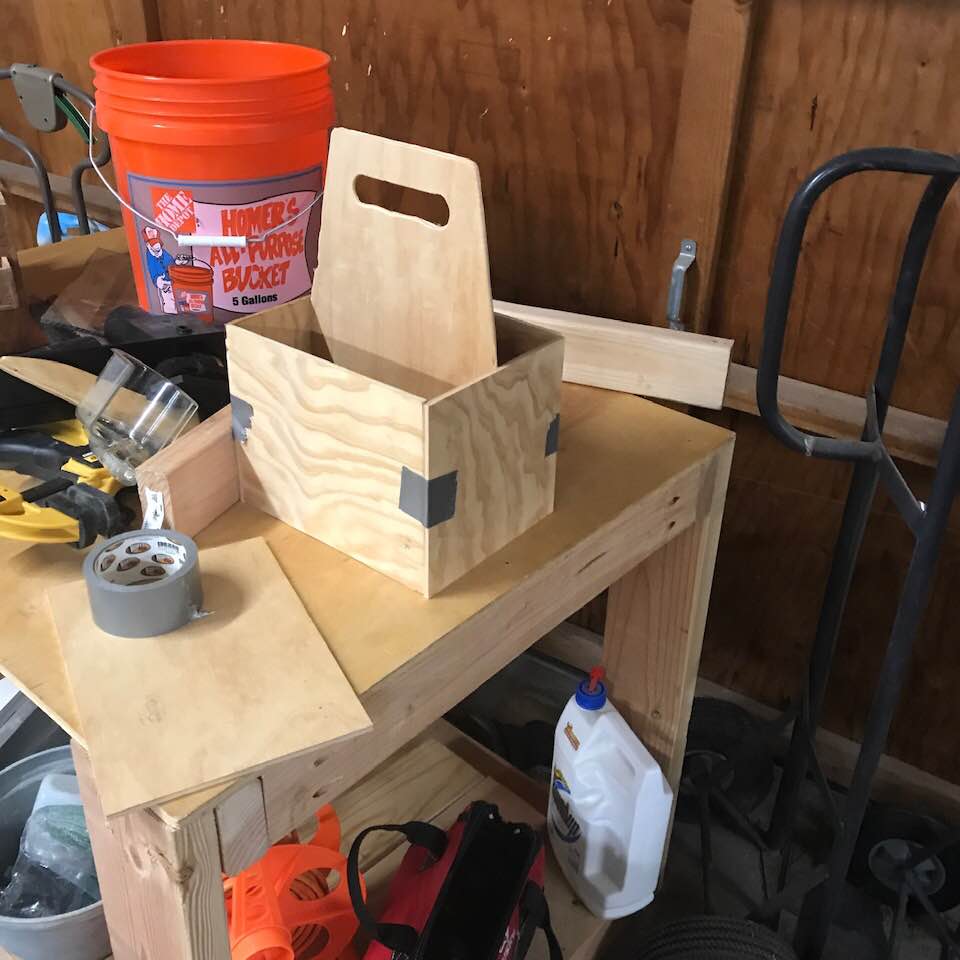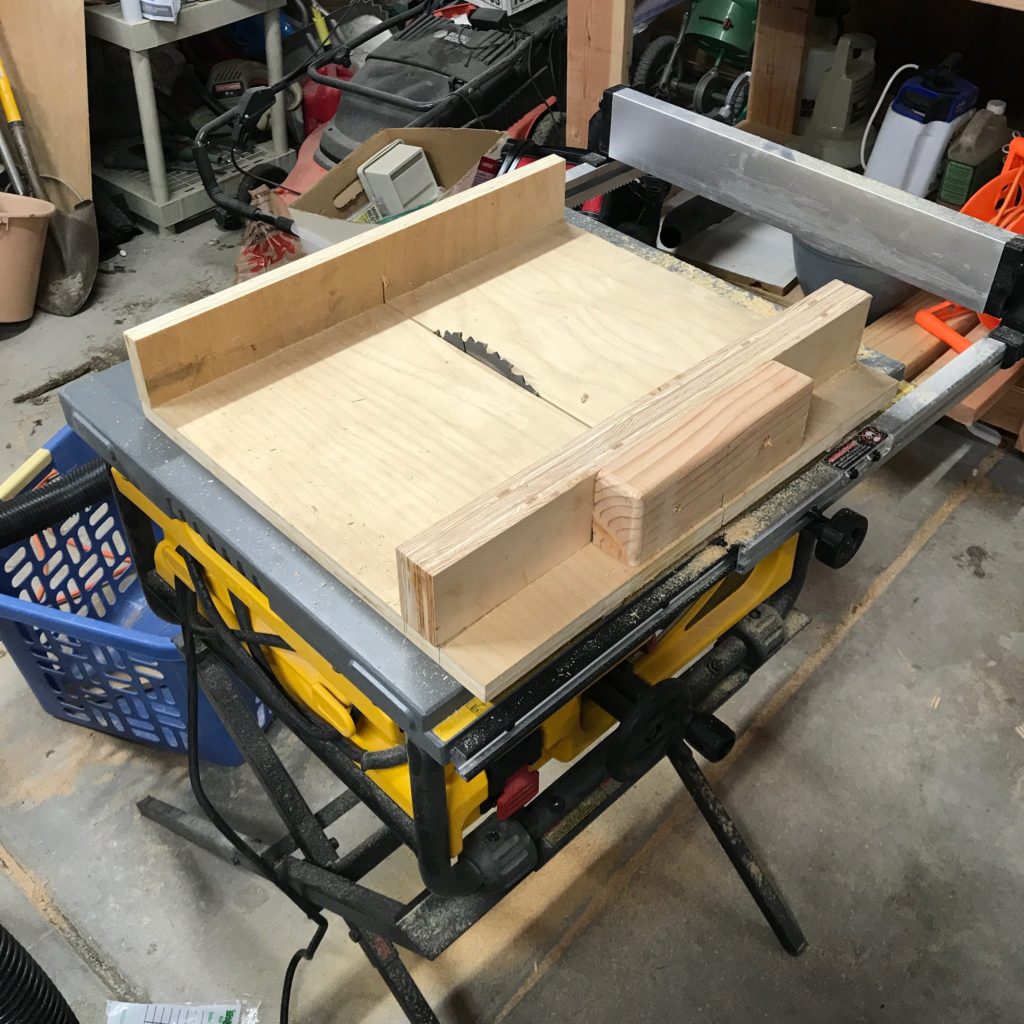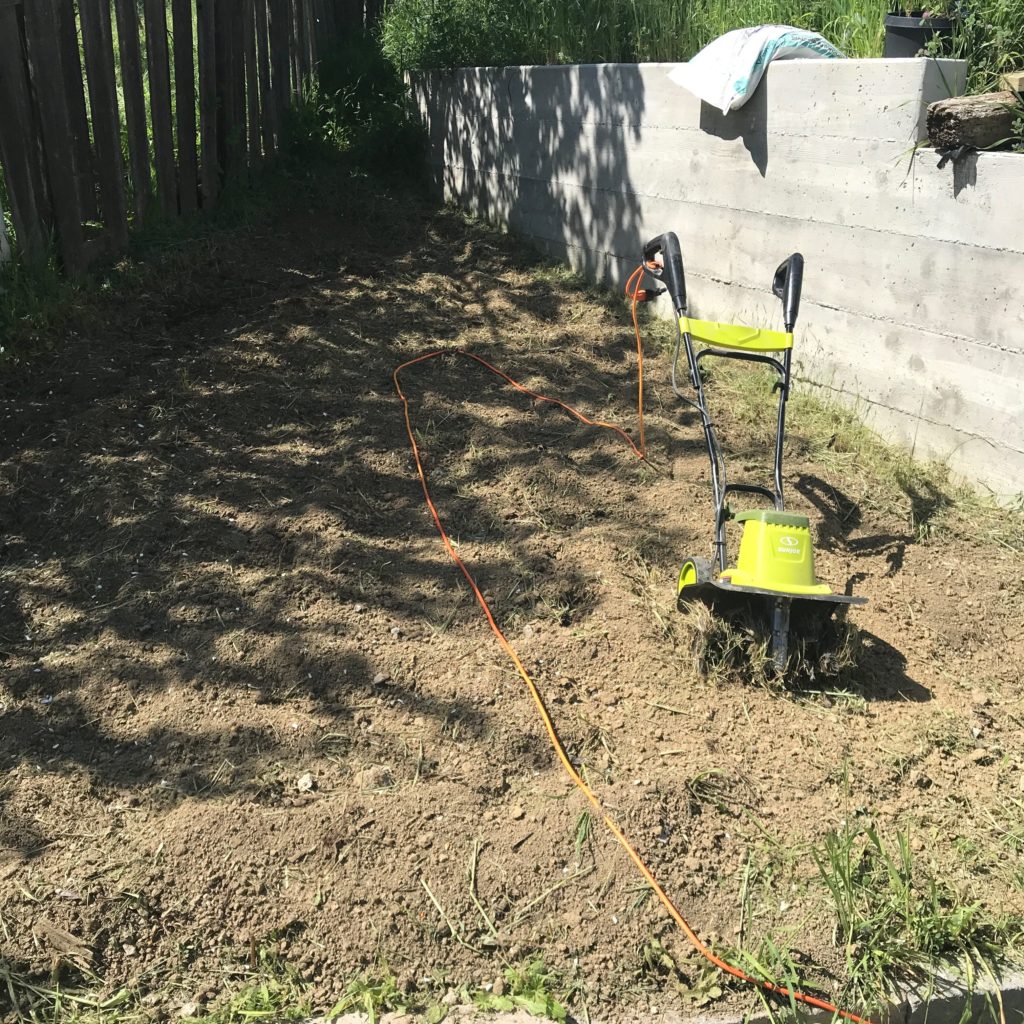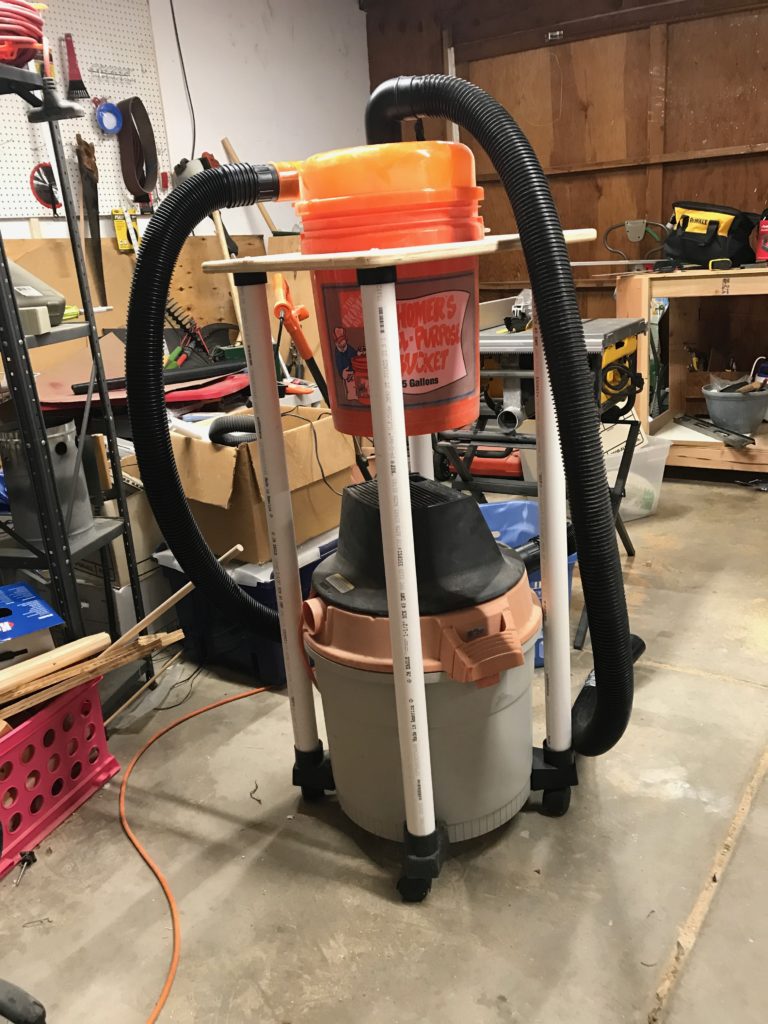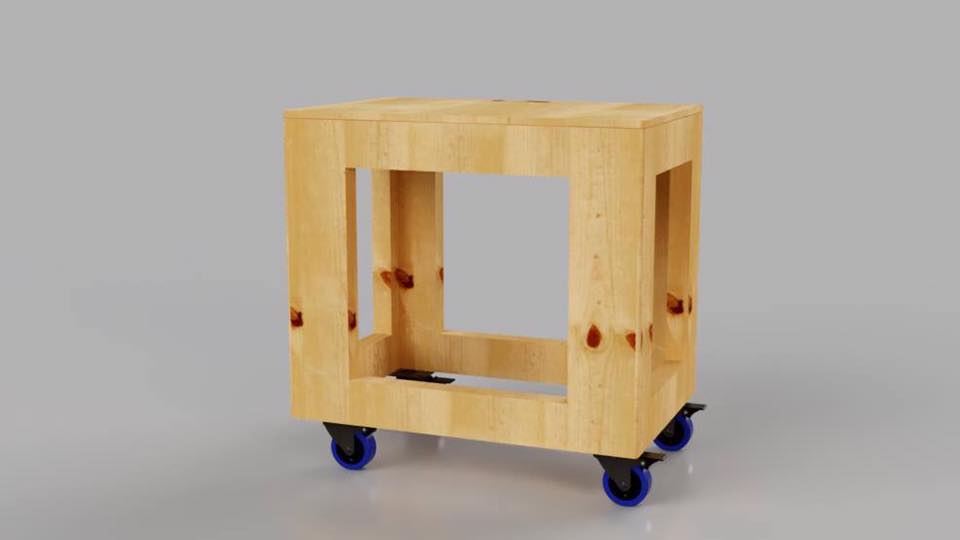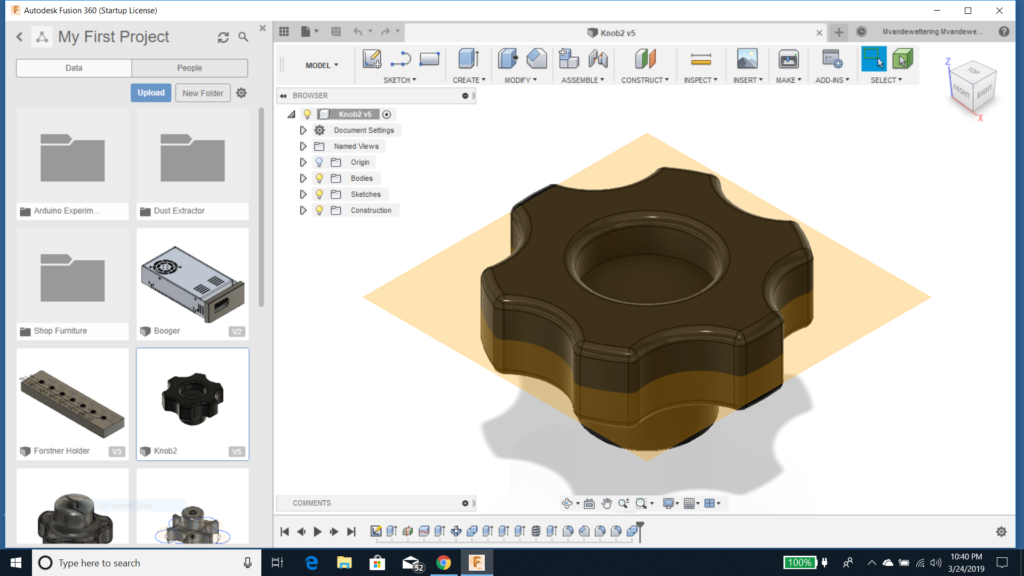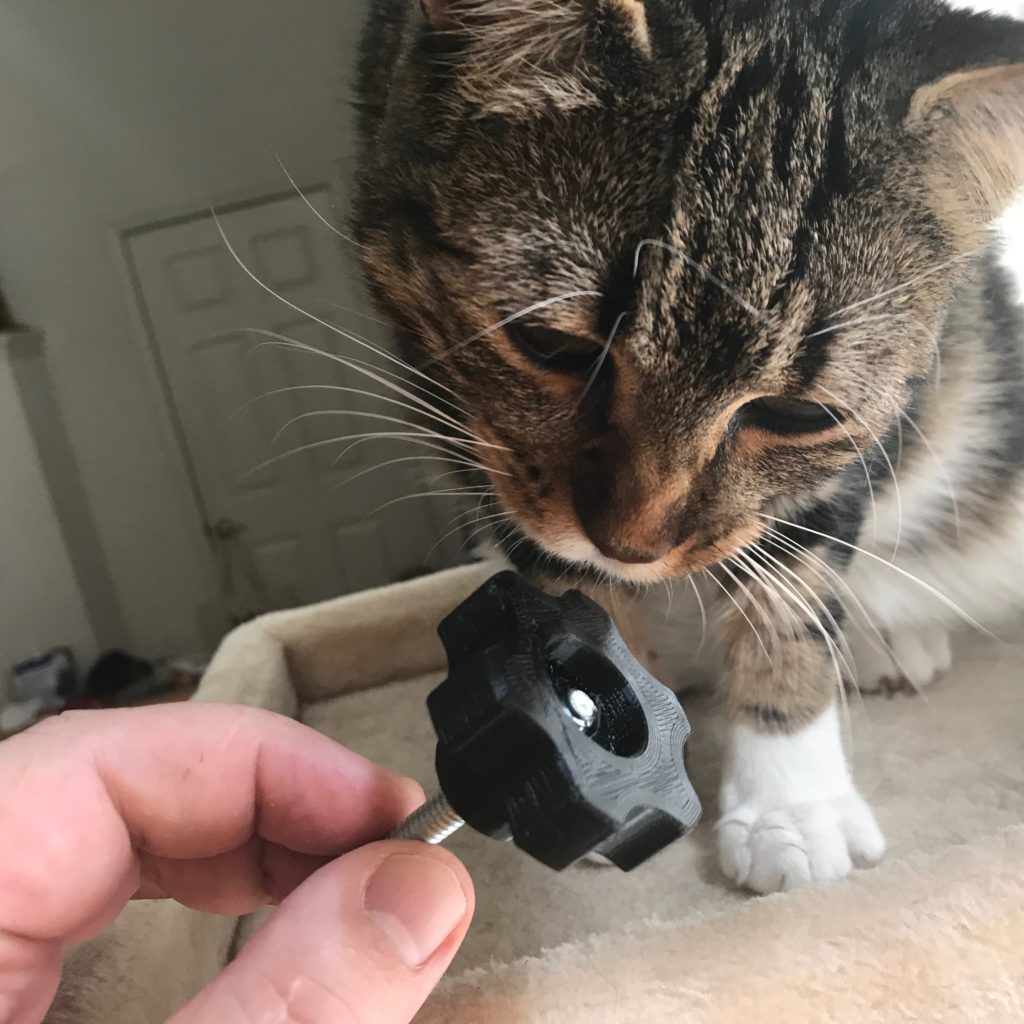
So, last night I didn’t actually get any woodworking done. Carmen actually did more than I did: she took the orbital sander to some (very rough) and cheap fence material that I’m going to use for the slats on the shelving and cleaned them up. They looked much nicer after this process. At just about $1.75 apiece, they are actually kind of nice cheap material for this kind of project. I think I need six of them to complete the two shelves for my garden potting bench, which means I actually am one short. I’ll have to go back and get a few more (having extras will probably mean I can do a couple more projects).
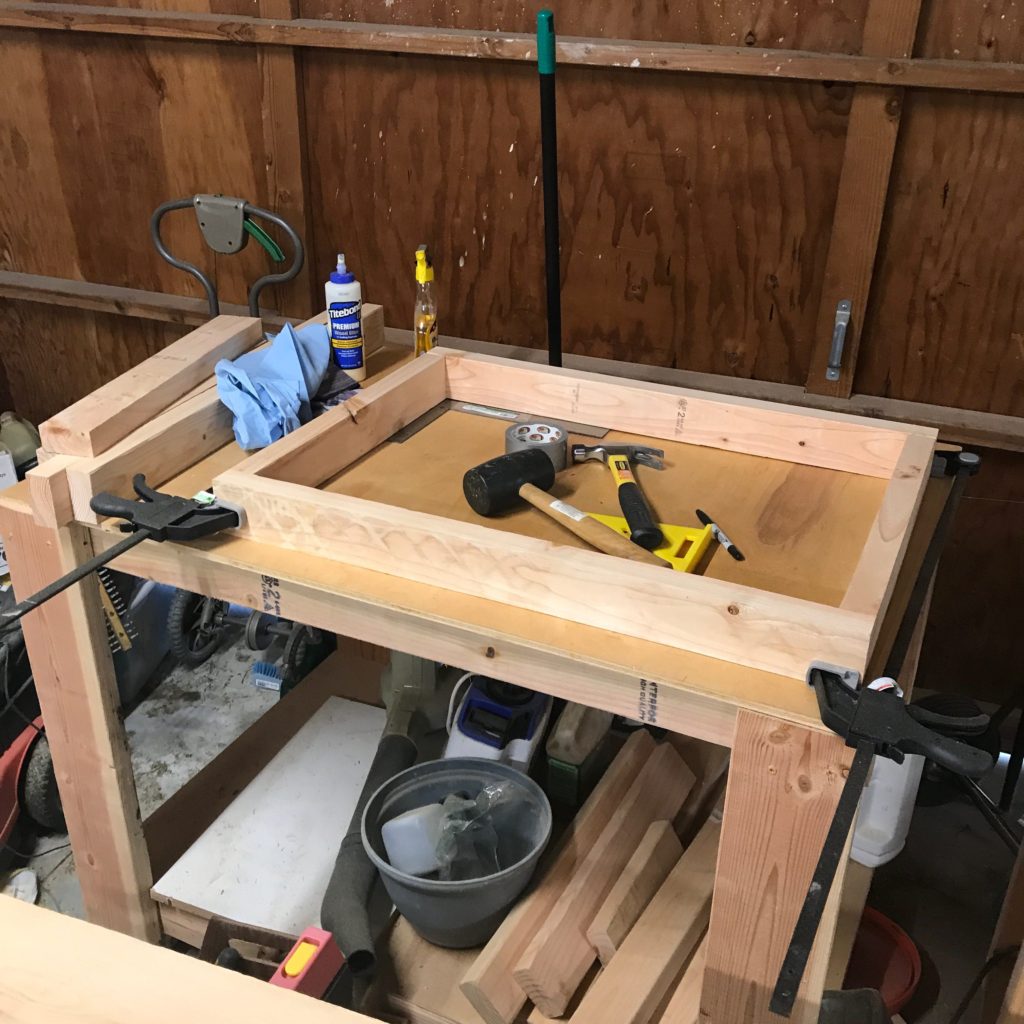
But I had left the scene on the right atop my rolling utility table. I had cut and trimmed the 2x4s for the top and bottom frames, and test fitted them with some of my 36″ clamps holding them roughly in place. I laid my smaller carpenter’s square inside, and the angles seemed pretty square. Measuring opposite diagonals showed a difference of about 1/8″. That isn’t so great, but neither is it especially worrying. It is, after all just going to be a potting bench, it will hardly matter at all. But it got me thinking about the tolerances, and just how much a deflection from right angles such a difference makes. So, instead of making more sawdust or boring holes, I started doing math.
My table is nominally 33″ x 24″ in size. If all the angles were perfect, you could use the Pythagorean theorem to figure out what the diagonal should be, and you come up with the value of something like 40.8″ But what if the measured diagonal isn’t 40.8″? How much of an angular difference of (say) 0.1″ make?
For that, I had to dust off the Law of Cosines. This is the generalization of the Pythagorean theorem. It is usually written as $$ c^2 = a^2 + b^2 – 2 * a b \cos{C}$$. Let’s say that my diagonal is actually just 40.7″ instead of 40.8″. Using that equation we can solve for the angle C, and if you have your handy scientific calculator around, you can find that the angle would be about 89.69°. (This is actually remarkably close to the accuracy of the cross cut sled that I made a week ago, but which I didn’t use at all on this project. Pure coincidence.)
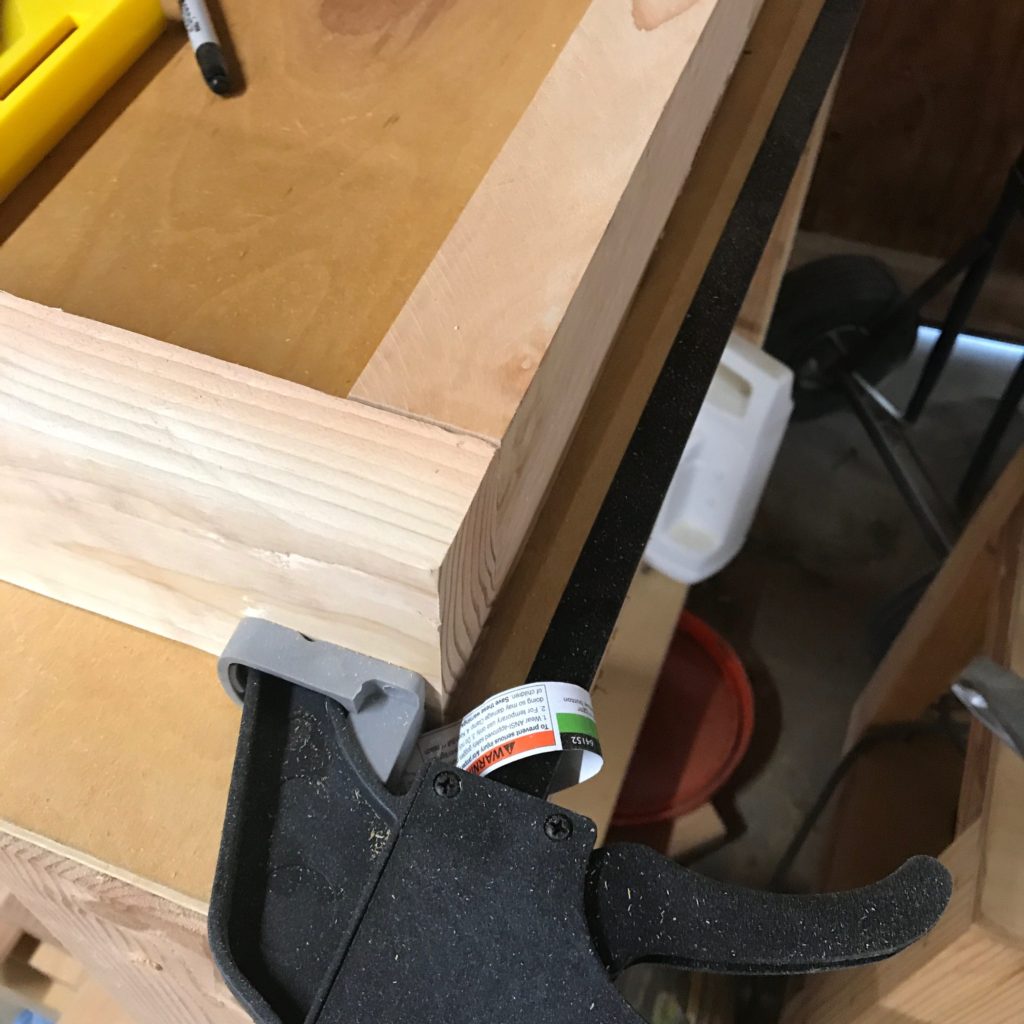
So, after doing this little bit of math, I thought I’d go back out to the workshop and get something done. So I went out, and stared at this corner for a while. You see, I have a couple of options here, having to do with how I could fasten these corners together. I’m not at the stage where mortising, tenons, dowels or even lap joints are on the table. I was basically trying to decide between two very simple options:
- I could simply pre-drill and sink two 2 1/2″ deck screws in through the face board and into the end grain of the side rail. Or…
- I could use my pocket hole jig, and put two Kreg screws in from the side frame and into the face frame.
- For bonus points, do I want to put the Kreg screws in from the outside of the frame, or from the inside.
(I will of course use glue as well. I have my bottle of Tightbond II ready.)
This simple question actually seemed to have a few dimensions to it, which of course left me ponding thoughtfully like Hamlet, asking “to screw into end grain, or not to screw into end grain. That is the question.”
Frankly, none of this really matters for this project. Either technique is likely to work. It’s not like my potting benchis going to hold back flood waters or hold up a roof. Indeed, the way these frames are oriented, the loads will almost certainly be unchallenging.
But it got me thinking: what principles could guide this choice?
The obvious thing to think about is the strength of the joint. So, which is stronger: a glued/screwed butt joint, or one which is glued and screwed with Kreg screws?
I did a little bit of online research, and the answer is… well… in an hour or so, unresolved to my satisfaction.
The obvious argument against the butt joint is that you are screwing into the end grain of the piece, whereas with the pocket screws, you are screwing into the side grain. Indeed, most people would say that screwing into end grain is a big no no. Wood is not isotropic, and forcing a screw into the end grain is like forcing a wedge in between the wood fibers and likely to induce a split. Thus, if you are screwing into end grain, you should always predrill so that the screw generates less force in a direction perpendicular to the screwing direction. I found this excellent explanation that I found helpful and encourage you to read.
If you read and understand this, then you understand a bit of why the engineering of pocket screws are the way they are: they allow you to not screw into the end grain. By starting in the side and burying themselves into the face, they allow most of the screw to be buried in the cross grain, where the holding power is much better and where pre-drilling is not only unnecessary, but is in fact undesirable: screws hold better in cross grain without a pilot hole.
Further scrounging revealed this page on whether the pockets should go on the inside or outside of the frame. The simple answer is perhaps the obvious one: you want the screw to be heading into the biggest part of the board, which means that you should start from the outside. It is also usually easier to clamp the piece together that way. But… well… that can be cosmetically less desirable. Of course depending on the size of your project, it may be difficult or even impossible to drive the screw in from the inside.
In other words, it’s all trade offs.
So, in the end I didn’t even make one hole in my project. I spent all the time thinking. But in a way that’s great. I want to gain more experience wood working, but since I’m relying on self-teaching, I have to spend time thinking and watching and pondering the possibilities.
Tonight, it’s likely I’ll put the frames together with pocket screws, but I can do so with a bit more confidence and understanding. And that is good.
I’ve also spent some time pondering how I am going to lay out the slats on the top, but I’ll save that for next time.
